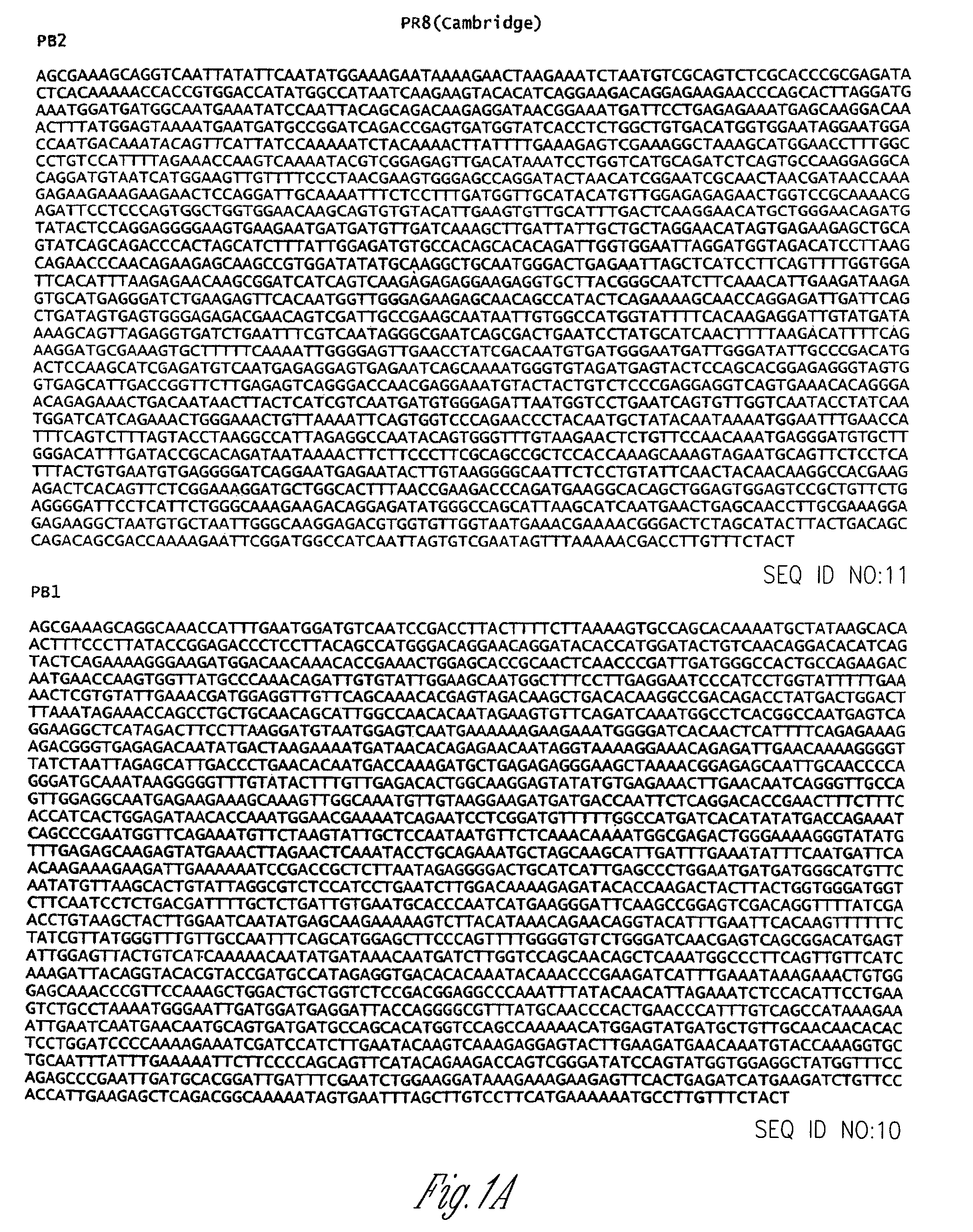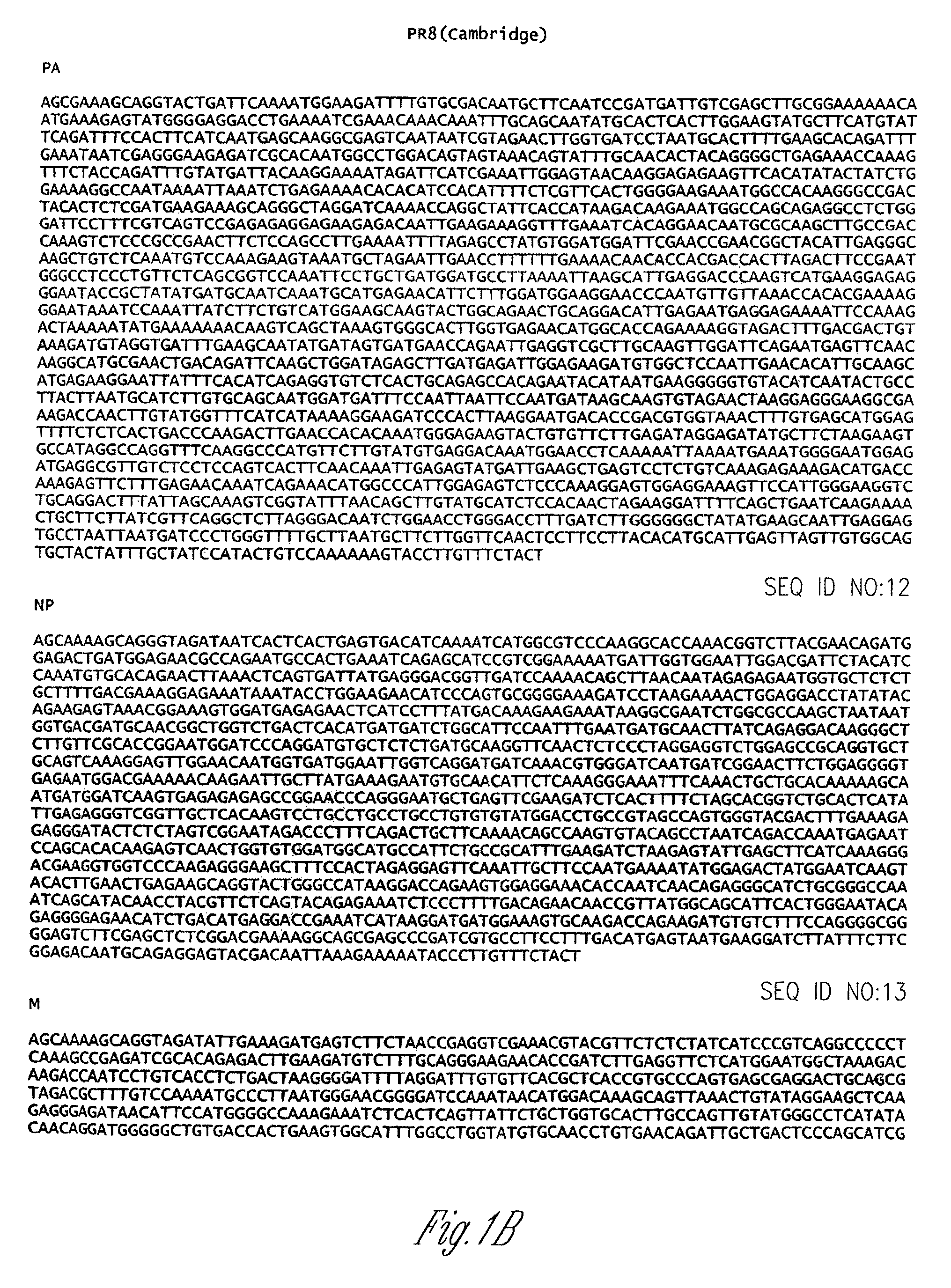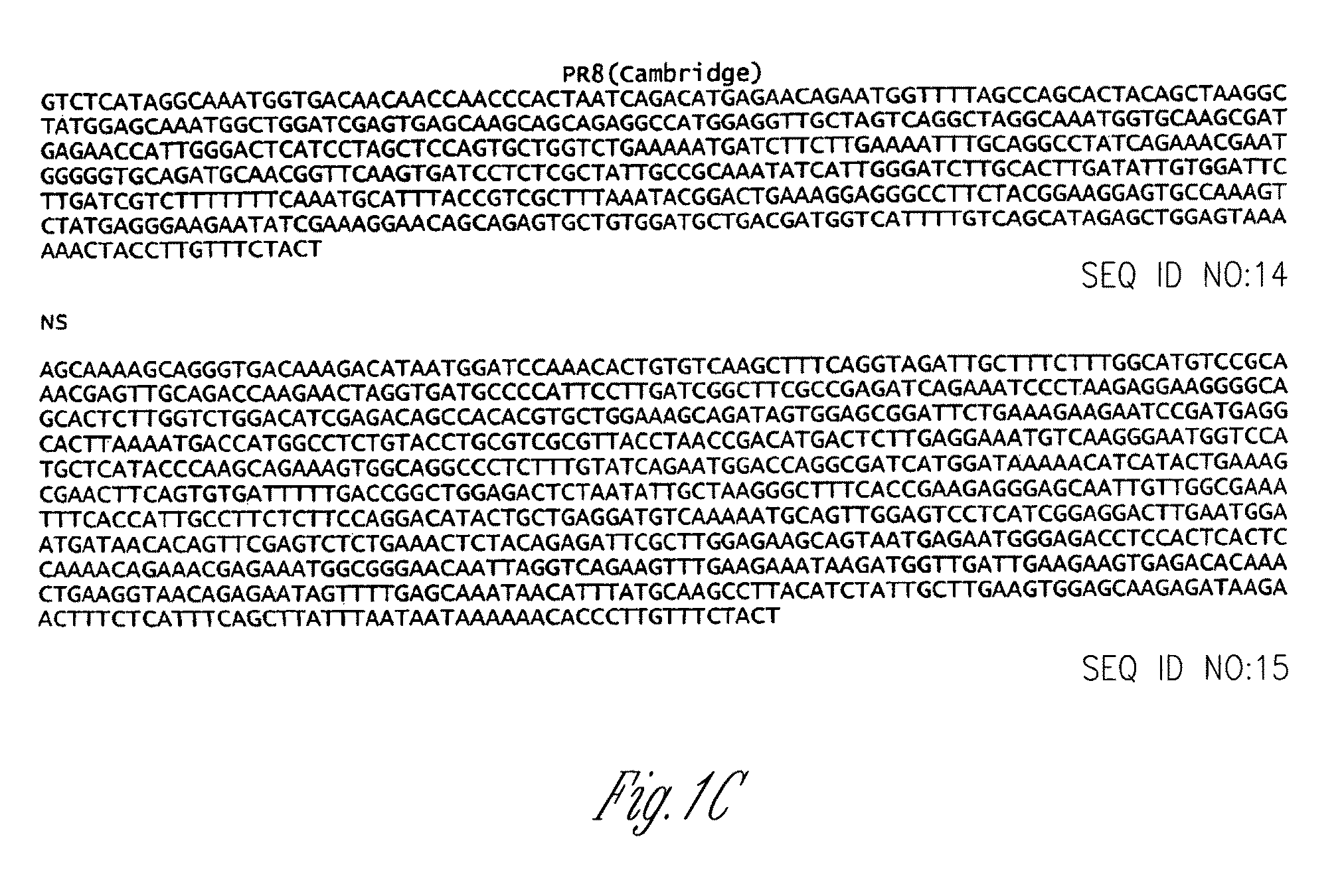High titer recombinant influenza viruses with enhanced replication in vero cells
a recombinant, high-titer technology, applied in the direction of immunological disorders, peptide sources, antibody medical ingredients, etc., can solve the problems of substantial morbidity and economic losses, challenges in vaccine manufacturing, etc., to enhance virus production, enhance virus replication, and increase ph
- Summary
- Abstract
- Description
- Claims
- Application Information
AI Technical Summary
Benefits of technology
Problems solved by technology
Method used
Image
Examples
example 1
Methods
Cells and Viruses
[0099]293T human embryonic kidney cells are maintained in Dulbecco's modified Eagle's minimal essential medium (DMEM) with 10% fetal calf serum and antibiotics. Madin-Darby canine kidney (MDCK) cells are grown in MEM with 5% newborn calf serum and antibiotics. African green monkey Vero WCB cells, which had been established after biosafety tests for use in human vaccine production (Sugawara et al., 2002), are maintained in serum-free VP-SFM medium (GIBCO-BRL) with antibiotics. Cells are maintained at 37° C. in 5% CO2. A WHO-recommended vaccine seed virus is NIBRG-14.
Construction of Plasmids and Reverse Genetics
[0100]To generate reassortants of influenza A viruses, a plasmid-based reverse genetics (Neumann et al., 1999) is used. The full-length cDNAs were cloned into a plasmid under control of the human polymerase I promoter and the mouse RNA polymerase I terminator (Poll plasmids).
[0101]A previously produced series of Poll constructs, derived from A / WSN / 33 (H5...
example 2
[0108]To establish robust systems for influenza vaccine production, egg-free, cell culture-based systems are needed. Vero cells are approved for human use and so are candidate hosts for influenza virus vaccine production. To elucidate the molecular basis for efficient growth of influenza vaccine seed virus in Vero cells, A / Puerto Rico / 8 / 34 (PR8) virus was passaged through Vero cells 12 times and the infectivity titer of the resulting virus was determined. Vero cell-adapted PR8 had over a 4 log increase in infectivity titers relative to non Vero cell-adapted PR8 (FIG. 2).
[0109]To determine the molecular basis for that growth difference, the genomes of both isolates were sequenced. Three amino acid differences were found: one in HA2, one in NA and one in PB2 (FIG. 3). To identify the contribution of each individual substitution, and of a combination of two of the substitutions, recombinant viruses with the individual substitution(s) were prepared and the growth of those recombinant vi...
PUM
| Property | Measurement | Unit |
|---|---|---|
| pH | aaaaa | aaaaa |
| acidic | aaaaa | aaaaa |
| length | aaaaa | aaaaa |
Abstract
Description
Claims
Application Information
 Login to View More
Login to View More - R&D
- Intellectual Property
- Life Sciences
- Materials
- Tech Scout
- Unparalleled Data Quality
- Higher Quality Content
- 60% Fewer Hallucinations
Browse by: Latest US Patents, China's latest patents, Technical Efficacy Thesaurus, Application Domain, Technology Topic, Popular Technical Reports.
© 2025 PatSnap. All rights reserved.Legal|Privacy policy|Modern Slavery Act Transparency Statement|Sitemap|About US| Contact US: help@patsnap.com



